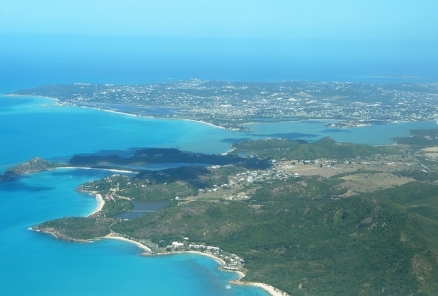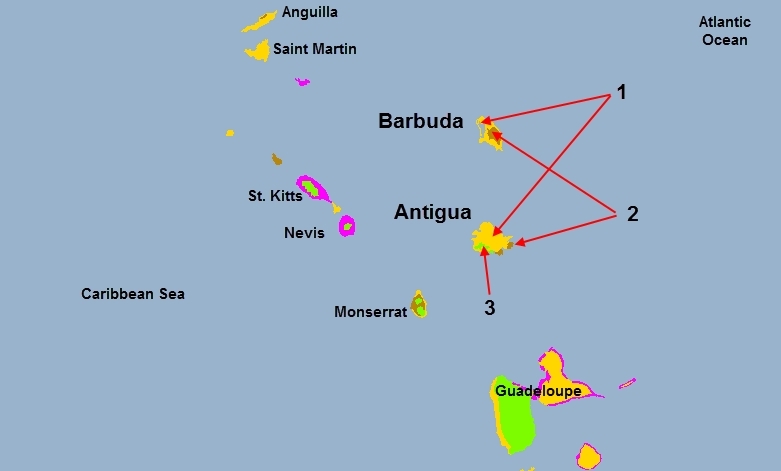Ecoregions of Antigua and Barbuda
Ecoregions of Countries Collection 
There are three ecoregions on Antigua and Barbuda:
- Carribean Shrublands/Leeward Islands xeric scrub
- Lesser Antliiean dry forests
- Leeward Islands moist forests
Contents
Carribean Shrublands/Leeward Islands xeric scrub
This ecoregion covers much of the land area on most of the Caribbean’s Leeward Islands. This ecoregion is characterized by low elevation, little rainfall and an arid climate. It is found either as a coastal band or in the case of islands such as Anguilla and Antigua, it encompasses nearly the entire island. More specifically, it covers most of Grande Terre and Marie-Galante of Guadeloupe, Antigua, Anguilla, St. Martin, St. Barthelemy, Saba, and the eastern portions of the US Virgin Islands and British Virgin Islands.
Lesser Antliiean dry forests
This dry forest ecoregion is comprised of several relatively small land areas on islands in the Caribbean’s Leeward Island Group. Due to the small geographic size and proximity to the more densely populated coastal regions, these forests are particularly prone to degradation and disturbance. Centuries of deforestation and intensive agricultural use have resulted in the alteration of much of the original forest cover and contributed to a subsequent loss of species richness. A relatively high degree of island-endemism is a characteristic that these dry forests share with many other forests in the Leeward Islands Group. Conservation measures vary significantly from one island to another while most suffer similarly from population-related development, agricultural encroachment, hunting, and limited enforcement of wildlife and environmental legislation.
Leeward Islands moist forests
The Leeward Islands moist forests are an ecoregion within the Caribbean Basin; because the size of these islands is limited, this ecoregion assumes a disproportionate value of endemism for its areal extent. The forests of this ecoregion, including the forested cores and their peripheral edges, have historically provided the downslope communities with a wide variety of useful goods and services such as building materials, fuelwood, natural medicines, wild fruits, and a habitat for game species and other wildlife. By far however, the most important service provided by the forests is as a reliable source of domestic water for each component island. Except for the more remote, inaccessible areas characterized by high relief, many of the forests on different islands in this ecoregion suffer from similar human-related pressures, i.e. agricultural encroachment, hunting, and limited enforcement of wildlife and environmental legislation. Increased communication, networking and effort of conservation on a regional basis are needed to ensure that these rich forests and their wildlife are maintained and protected.
Context
Ecoregions are areas that:
[1] share a large majority of their species and ecological dynamics;
[2] share similar environmental conditions; and,
[3] interact ecologically in ways that are critical for their long-term persistence.
Scientists at the World Wildlife Fund (WWF), have established a classification system that divides the world in 867 terrestrial ecoregions, 426 freshwater ecoregions and 229 marine ecoregions that reflect the distribution of a broad range of fauna and flora across the entire planet.

